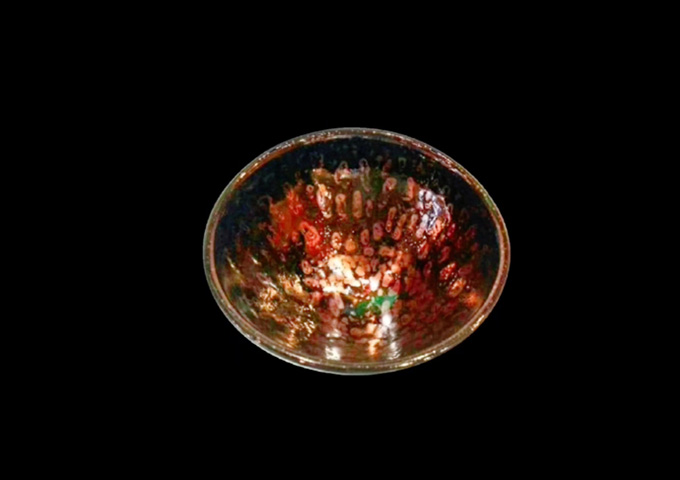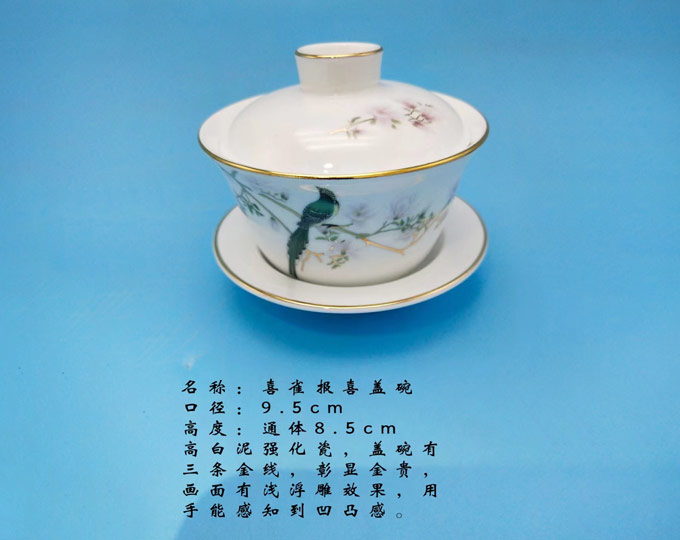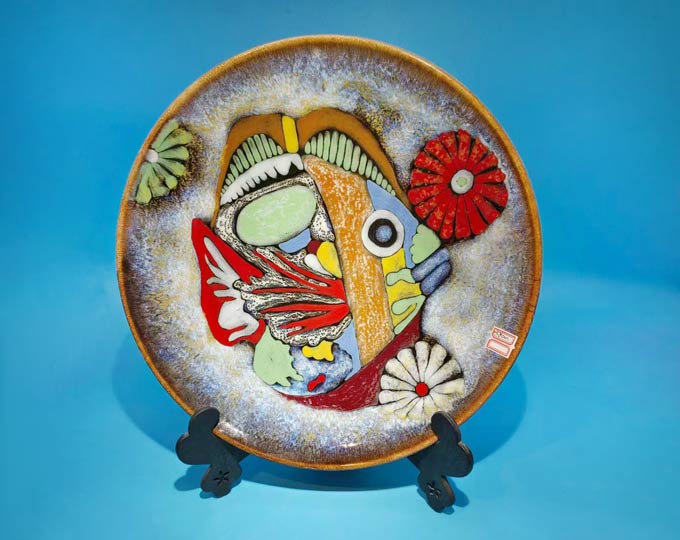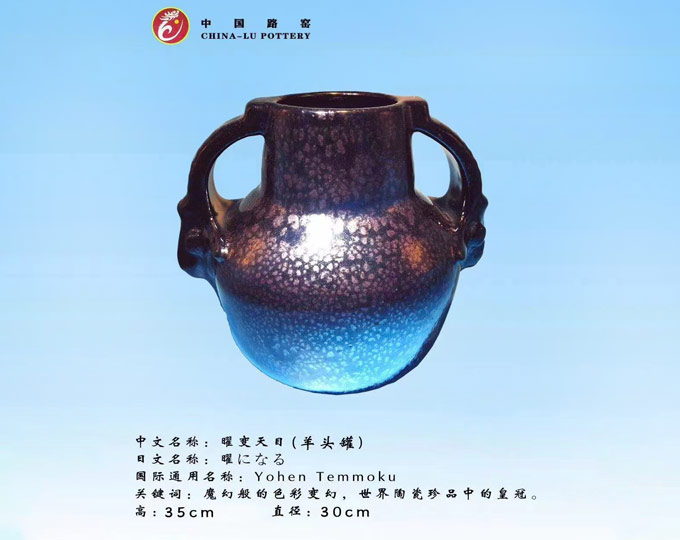

Jinhua Lu was born in Zibo, Shandong Province in 1956. He devoted most of his life to pottery art and founded Zibo Ceramic Art school, Zibo brick carving art research institute as well as Zibo seven-color pottery workshop.
He is :
- Master of English, poet, ceramist, pottery educator.
- Intangible cultural inheritor of Zibo brick carving.
- The owner of Lu kiln of Shandong time-honored enterprise.
- Curator of Zibo Si Hua Ceramic Museum, master of Shandong ceramic art,
- Director of the workstation of Academician Lilongtu.
Since 2014, the Li Longtu Academician's workstation has been approved by the state to engage in the research of obsidian celestial china and photonic crystal new materials. It has obtained 6 national invention patents and 5 copyright registration certificates from the State Intellectual Property Office. His works have been collected by the German National Museum, Taiwan National Palace Museum, China Ceramics Museum, and dozens of other cultural and cultural institutions, and he has designed and produced pottery and brick murals for many memorial halls and museums.
Besides art, he also loves literature and poetry and he has published "Selected Chinese Ancient Sports poetry" book, "Sports Praise - Chinese Sports Culture of Five Thousand Years" book, and other works. The two books were presented to Samaranch and Olympic officials around the world as gift books. His scientific and technological works include "On the Change of Ceramic Kiln", and his historical works include "Cradle of Qilu Ancient Civilization" and "Qilu Ancient Land is the Cradle of Chinese Ceramics".
In 1992, he returned to his hometown to inherit the ancestral industry of the Lu kiln as the sixth-generation inheritor. He founded the Linzi Institute of Black Pottery, which carried out the research and production of black pottery and colored pottery. Now, his works are exported to many countries.
In 1996
Zibo Black Pottery was awarded as an excellent project by the State Science and Technology Commission in the "10th anniversary of Spark Plan Implementation and the 8th Five-Year Agricultural Science and Technology Achievements Expo".
In 2000
He founded Zibo Ceramic Art School.
In 2004
He founded Zibo Luyi Brick Carving Art Research Institute. He has designed and produced a large number of brick murals for a number of memorials, museums, universities, residences, and other units.
In 2005
He design the large-scale mural project of "Chinese Sports Culture of Five Thousand Years" for the west gate of the Olympic Center.
In 2008
The exhibition of Chinese Ancient Sports Poetry Calligraphy and Porcelain Carving created by Jinhua Lu was opened in Peking University Centennial Lecture Hall and Beihai Park Art Museum. Guangming Daily reported on the exhibition with the title of "Sports Praise Engraved on Porcelain".
Beijing urban sculpture construction management office awarded a certificate of honor to Mr. Jinhua Lu's "Olympic Inscription", which was exhibited in Jinan and Qingdao.
In 2009
He created the "Fuxing Tripod", which was 2.25 meters high, 1.35 meters in diameter, and about one ton in weight. With its huge shape, complicated firing, and wonderful design, he created the most famous Chinese Lang red glaze tripod.
In 2013
Lu's Ceramic calligraphy and carving Method won the copyright registration certificate of the National Copyright Administration.
The production process of colorful kiln-changing ceramics has won the national Invention patent Certificate and the integrated energy-saving shuttle kiln has won the national utility model patent certificate.
In 2019
The launching ceremony of "The Beginning of Porcelain System -- Jinhua Lu National Rejuvenation Porcelain Art Exhibition National Tour" was held at Zibo Ceramic Glaze National Art Museum, and the tour exhibition was continuously held in 16 cities across the country.

The color-changing ceramics are called Yohen Tenmoku in academia and are scientifically explained as photonic crystals. This new type of ceramic art is developed successfully by artist Jinhua Lu after nearly ten years of hard work.
The color change depending on the light and the angle of illumination. If we view it under natural light, the silver-white light spots will appear on the glazed surface of the pitch-black pottery. Under the studio light, it became purple-red light spots. In the evening, when shooting with the flashlights of two mobile phones, it has pink, red, and blue colors. It emits red light at 396 nanometers and blue light at 550 nanometers showed by the luminescence spectrum test by Tsinghua University. Yellow light and green light can be seen in the transition section. This amazing new ceramic variety has written a brand-new chapter for Chinese ceramics.



 9 views
9 views
 9
9
 Subscribe
Subscribe